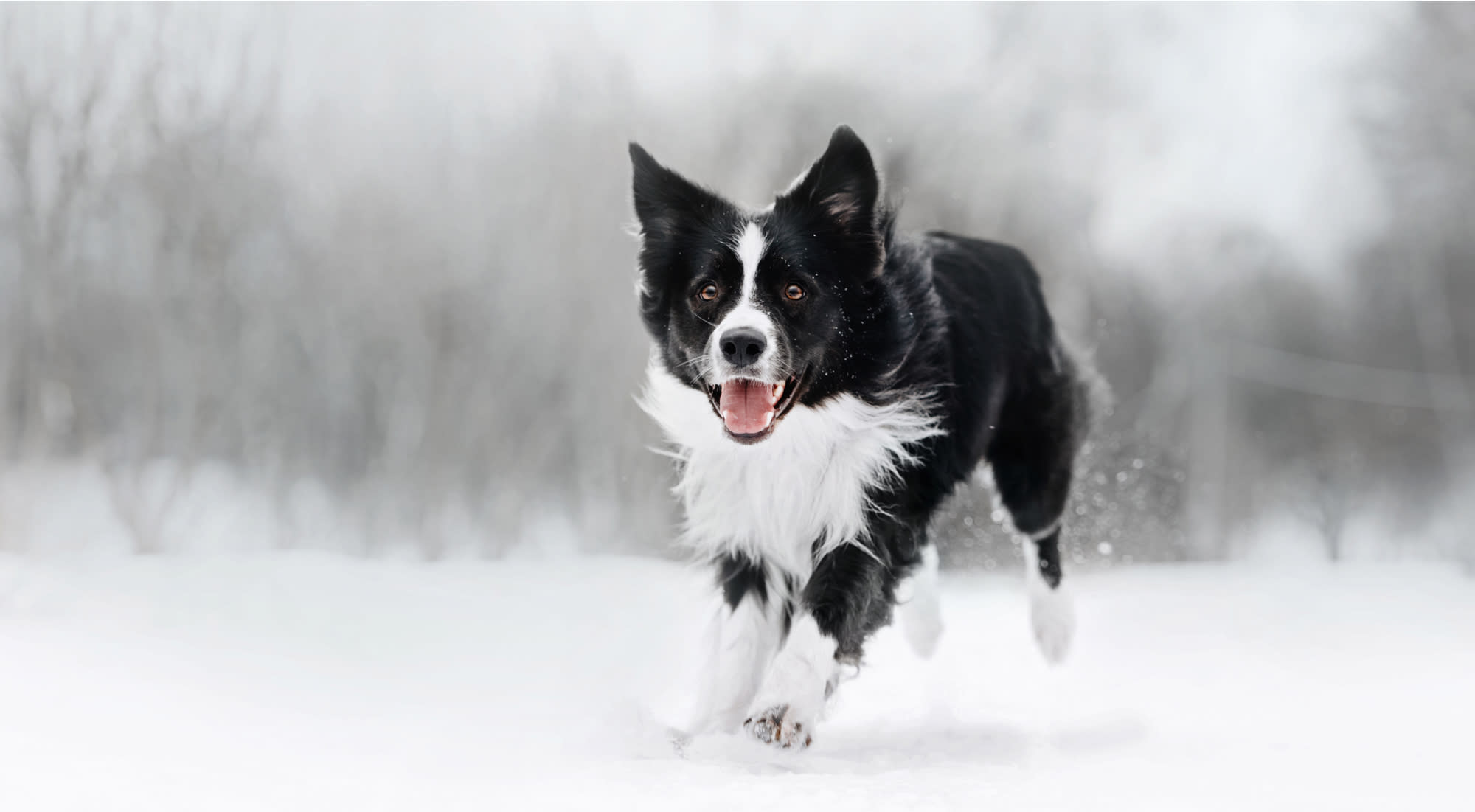Some pet parents will have a hard time believing this problem even exists. After all, having a dog that’s resistant or reluctant to go outside is a very IYKYK (if you know, you know) situation.
But the great outdoors is where your pup is going to get most of their exercise and bathroom breaks, so there are a few tricks that can ease the anxiety — for both you, and her — of getting out in the slushy mess of seasonal change.
Older dogs, puppies, and miniature breeds are likely to have an opinion about the weather, as they tend to feel the effects of inclement weather more acutely. But it can also be an issue for dogs who are afraid of strong wind or other unsettling weather.
So what do you do if your dog is less-than-keen to go out in unpredictable weather conditions, especially during the long weeks between the dregs of winter and the arrival of full-on spring?
Here are some tips for soothing your canine bff when they’re making a fuss about this integral part of their daily routine.
Paw wax for the win, and getting your doggo used to the ‘battle of the boots’
Salt, sand, and grit on sidewalks might cause a dog’s paws to dry out, crack or even burn. The great melt can also mean unavoidable icy puddles that human feet are protected from with rubber boots, but dogs tackle unprotected. The obvious solution is a set of properly fitting booties, but not every furry friend is willing to adopt footwear.
If paw protection is something your pup only requires once in a while, then disposable rubber boots are a good option. They can actually be rinsed, dried and worn multiple times, while the loss of one doesn’t require the purchase of a whole new set.
If that is a step too far for your dog’s feet, paw wax is a great alternative. For most dogs, applying it once a week is sufficient, but particularly active dogs will benefit from more frequent application. High-quality paw wax is designed to be semi-permeable, allowing sweat to escape while protecting paws from external moisture.
Paws tend to be sensitive areas in general for dogs, so if your pet is still in the puppy stage, it’s a great time to get her used to having her paws touched. That way, when it comes time to protect those areas, the epic “battle of the boots” is more likely to be a small battle vs an epic chase around the living room.
To safely remove sand and salt after winter walks, paw pads should be gently wiped or washed with lukewarm water - this benefits not only your pup, but also your floors and furniture too.
And while spring signals that it’s time to shed our down parkas for lighter jackets, the damp air might still bother certain dogs — think older breeds with sensitive joints or pups that don’t carry a lot of extra body weight. Your pet might require an extra layer, longer into the season than you think.
When your dog hates all things cold
High winds, hail, sleet, snow. March and April in Canada has it all when it comes to wild weather.
Some dogs are fearful in these kinds of conditions, and can benefit from products like thunder shirts and hoodies. These form-fitting items are designed to make your dog feel secure by hugging close to their body. The hoodie option also muffles loud noises by protecting ears.
Behavioural training is another important strategy for addressing your dog’s fears — plus it also applies if they have a distracted nature that gets caught up in seasonal changes.
Have you noticed that when the seasons change your dog suddenly insists on stopping every 30 seconds to smell the grass? Of course we want our dogs to explore the outdoors on their own terms, but we don’t always have two hours to walk around the block.
When spring arrives, make time for an occasional “Sniffari,” says Melanie Krumme, a trainer at the Lions Foundation of Canada Dog Guides.
Krumme suggests that pet parents take their dogs on walks with the specific intention of spending some extra time letting them get to know what's going on in the neighbourhood via their noses. “Sniffing is a really big outlet that dogs need,” says Krumme. “And we need to be able to provide that outlet for our dogs. Our dogs don't always have to be in a perfect heel while we're walking.”
She advises purchasing an extra long leash for these outings and finding a safe, open space to take your dog to. “Give your dog a little bit of extra leash and just let them explore a little bit.”
Training and conditioning to address both fear and distraction are centred on positive reinforcement, simple eye contact, and (no surprise here) treats!
When your dog is exposed to the thing they’re distracted by, or afraid of, give them a treat and tell them how good or brave they’re being, then encourage them to continue with the walk. Over time, distracted or fearful behaviour will become easier to manage.
For fearful dogs, desensitization to triggers will build up, but keep in mind that the process can be a slow one and doing too much too soon can overwhelm your pet. Krumme suggests taking on training in five minute-long intervals.
“It's best to do small, short training sessions,” she says. “Do a five minute session every day if you can. Don't go out on a walk with your dog with the intention of having them walk perfectly with you the whole time, because that probably won't happen, and you're going to get frustrated and then they will feed off of that frustration and it won't be enjoyable.”
Ultimately the goal is to train your dog to associate the outdoors with treats and fun instead of distractions or scary weather.














































